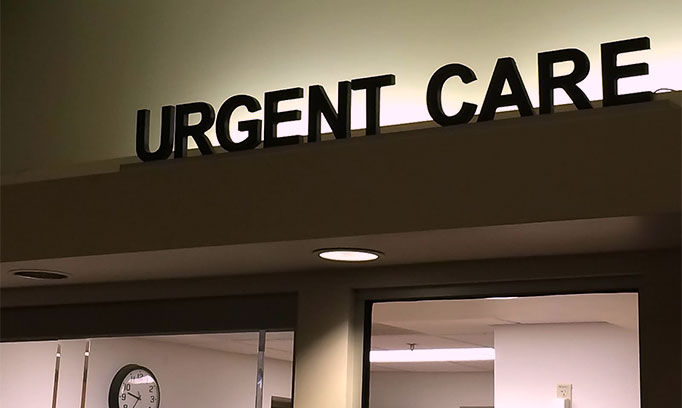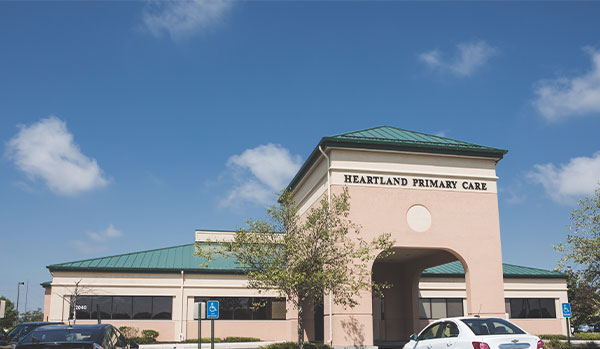Specialist Suggestions on Navigating Clinic Options for Urgent Care
Specialist Suggestions on Navigating Clinic Options for Urgent Care
Blog Article
Recognizing the Duty of Urgent Care in Giving Timely Therapy for Non-Life-Threatening Problems
Immediate care facilities have actually become an essential element of the medical care landscape, attending to the prompt demands of patients with non-life-threatening problems. By providing prompt and obtainable medical services, these centers effectively bridge the space in between medical care and emergency situation departments. Nonetheless, the implications of their role expand beyond plain benefit, prompting a better exam of when and just how these facilities are made use of. Comprehending the subtleties of urgent treatment might dramatically influence person results and the overall efficiency of health care delivery. What elements add to their growing importance in modern medication?
What Is Urgent Treatment?
Urgent treatment refers to a category of medical services developed to address non-life-threatening problems that call for immediate interest. These centers offer as an intermediary between medical care medical professionals and emergency spaces, using a practical alternative for individuals that require prompt care without the considerable waiting times usually related to emergency situation departments.
Immediate treatment facilities are generally staffed by medical professionals, consisting of medical professionals, registered nurse practitioners, and physician assistants, who are educated to detect and treat a broad variety of conditions. Typical solutions provided by these centers include therapy for minor injuries, illnesses, and infections, along with diagnostic examinations such as X-rays and lab work.
Additionally, immediate care facilities usually accept walk-in patients, removing the need for visits. On the whole, immediate treatment plays a crucial duty in the health care system, guaranteeing individuals can access crucial medical solutions immediately and successfully.

Many individuals may find themselves unclear concerning when to seek care at an immediate treatment center rather than a main treatment physician or an emergency clinic. Immediate care is created to deal with non-life-threatening conditions that require prompt attention yet are not serious sufficient to require an emergency situation room see.
Usually, one should consider immediate look after concerns such as small fractures, strains, cuts calling for stitches, or infections like urinary system infections. In addition, cool or influenza symptoms, breakouts, and allergies can additionally be appropriately handled in this setup.
It is essential to note that urgent treatment is not suitable for deadly emergency situations, such as chest discomfort, trouble breathing, or severe blood loss, which necessitate prompt emergency clinic intervention.
People that lack access to a medical care medical professional or can not secure a prompt visit may additionally profit from urgent care services. Ultimately, comprehending when to make use of urgent care can cause more efficient health care distribution, allowing patients to receive the proper level of care based upon their particular wellness needs.
Benefits of Urgent Care Centers
Choosing urgent treatment centers for non-life-threatening problems provides several advantages that boost individual experience and access. One key advantage is the reduced wait times compared to standard emergency situation spaces. Immediate treatment facilities usually operate a first-come, first-served basis, enabling people to get timely medical attention without the lengthy delays often associated with hospital setups.
Additionally, urgent treatment centers give extensive hours, including weekends and nights, fitting clients with differing timetables. This flexibility ensures that individuals can seek treatment when it is most practical for them, even more advertising timely intervention.

Additionally, these centers usually offer a comprehensive array of services, including minor procedures and analysis tests, all under one roof covering. This debt consolidation of solutions not just improves the individual experience yet likewise fosters a much more cohesive method to handling non-life-threatening health and wellness problems, inevitably benefiting overall individual end results.
Usual Conditions Treated
At immediate care centers, a selection of non-life-threatening problems can be successfully dealt with, giving clients with obtainable and prompt clinical help. These centers are particularly proficient at attending to problems that require punctual attention however do not posture an instant threat to life or limb.
Typical problems treated at view urgent treatment facilities consist of minor injuries such as strains, cracks, and stress. Immediate treatment facilities are geared up to execute essential analysis examinations, such as X-rays and research laboratory tests, allowing them to give comprehensive care.
Additionally, urgent treatment companies can carry out inoculations, assisting to avoid the spread of transmittable illness - Urgent Care. They additionally use solutions for small treatments, such as suturing wounds or draining abscesses. By providing these diverse services, immediate care centers play an important duty in linking the void in between medical care and emergency situation services, ensuring clients obtain prompt therapy for a large array of problems without the need for lengthy delay times normally related to emergency situation spaces
Exactly How Urgent Treatment Sustains Healthcare System
Urgent treatment facilities play a crucial role in supporting the general health care system by alleviating the problem on emergency divisions and providing timely access to healthcare for non-life-threatening problems. By handling cases such as minor injuries, infections, and diseases, urgent care centers allow emergency divisions to concentrate on more crucial individuals requiring immediate focus.
Moreover, urgent care facilities boost health care accessibility, using extensive hours and a more practical choice to traditional medical care settings. This accessibility is especially valuable for individuals that may not have a routine doctor or that require prompt treatment outside of typical workplace hours. Because of this, urgent care centers effectively lower improve and wait times person complete satisfaction.
Furthermore, urgent treatment facilities add to set you back financial savings for both clients and the medical care system by offering lower-cost solutions contrasted to emergency situation divisions. This economic performance is essential in an era of rising health care costs, allowing clients to get essential treatment without sustaining exorbitant costs.
Verdict
Finally, immediate treatment facilities play a vital duty in the health care system by delivering prompt therapy for non-life-threatening conditions. By bridging the gap in between key treatment and emergency spaces, these facilities guarantee that clients obtain prompt clinical focus without the lengthy wait times commonly linked with emergency divisions. The access and performance of immediate treatment centers contribute dramatically to relieving the total concern on medical care resources, enhancing patient results, and promoting an extra efficient medical care shipment system.
Immediate treatment facilities have arised as a crucial element of the medical care landscape, dealing with the instant demands of clients with non-life-threatening problems. Urgent treatment visits generally incur reduced out-of-pocket costs important site compared to emergency division check outs, making treatment extra economical for clients without endangering quality. Urgent treatment centers are outfitted to execute necessary diagnostic examinations, such as X-rays and lab examinations, enabling them to offer comprehensive treatment.
By supplying these varied solutions, urgent treatment facilities play an important duty in linking the gap in between key treatment and emergency situation solutions, guaranteeing individuals obtain prompt treatment for a large range of conditions without the need for long delay times commonly connected with emergency spaces.
Moreover, immediate treatment facilities boost healthcare accessibility, providing extended hours and an extra hassle-free alternative to standard primary treatment settings.
Report this page